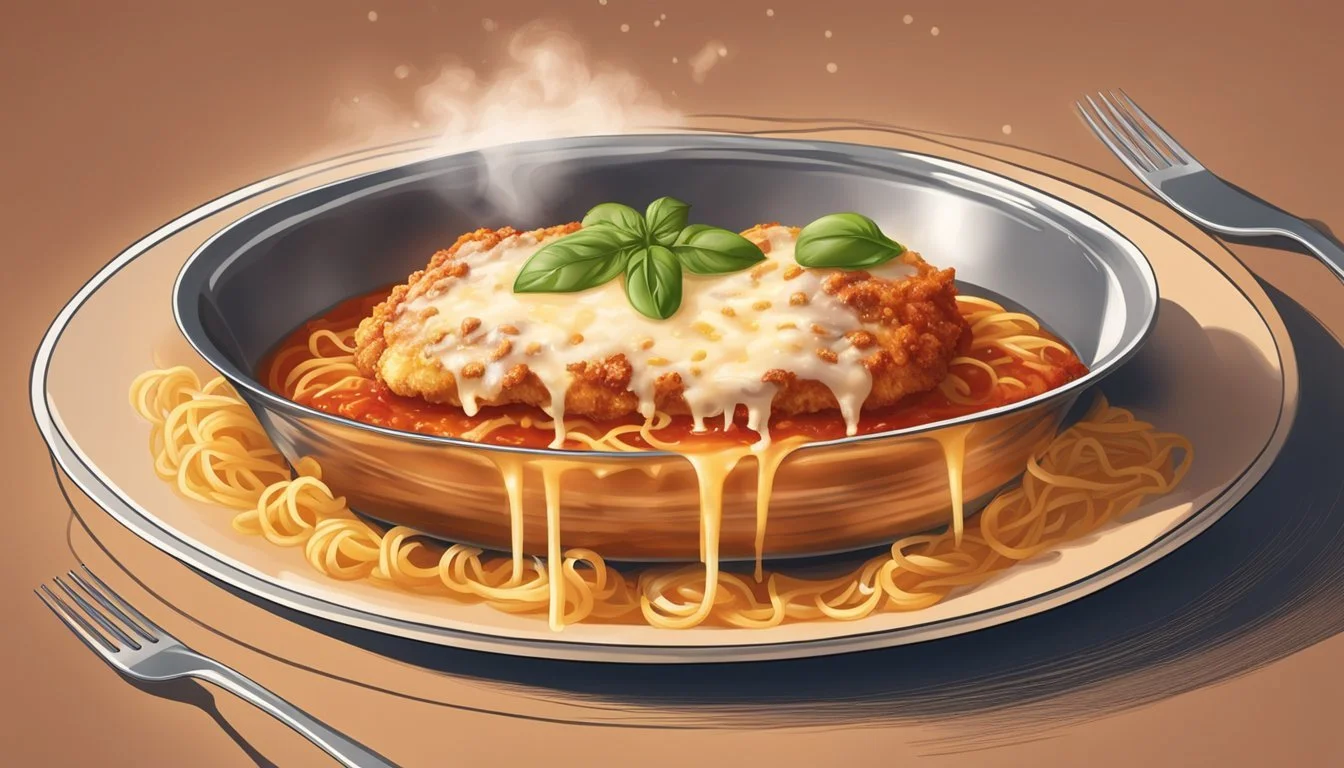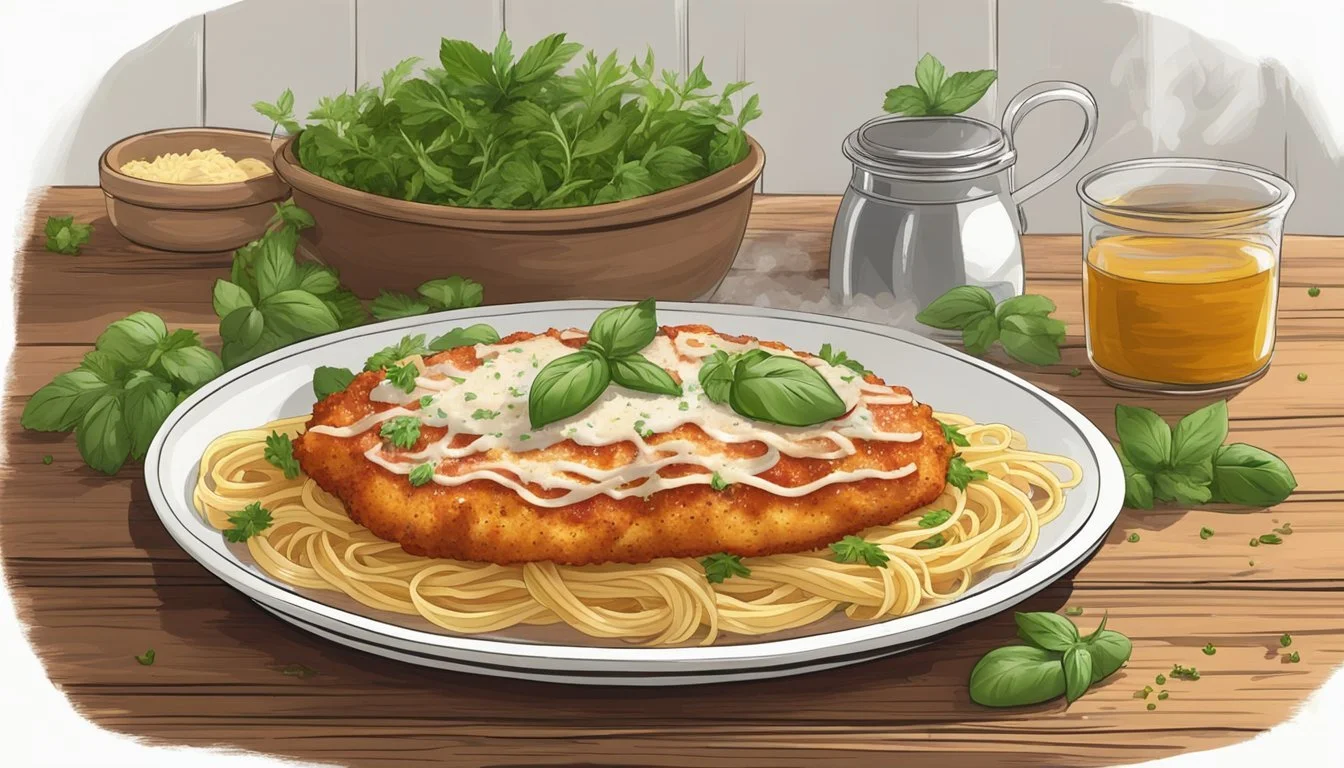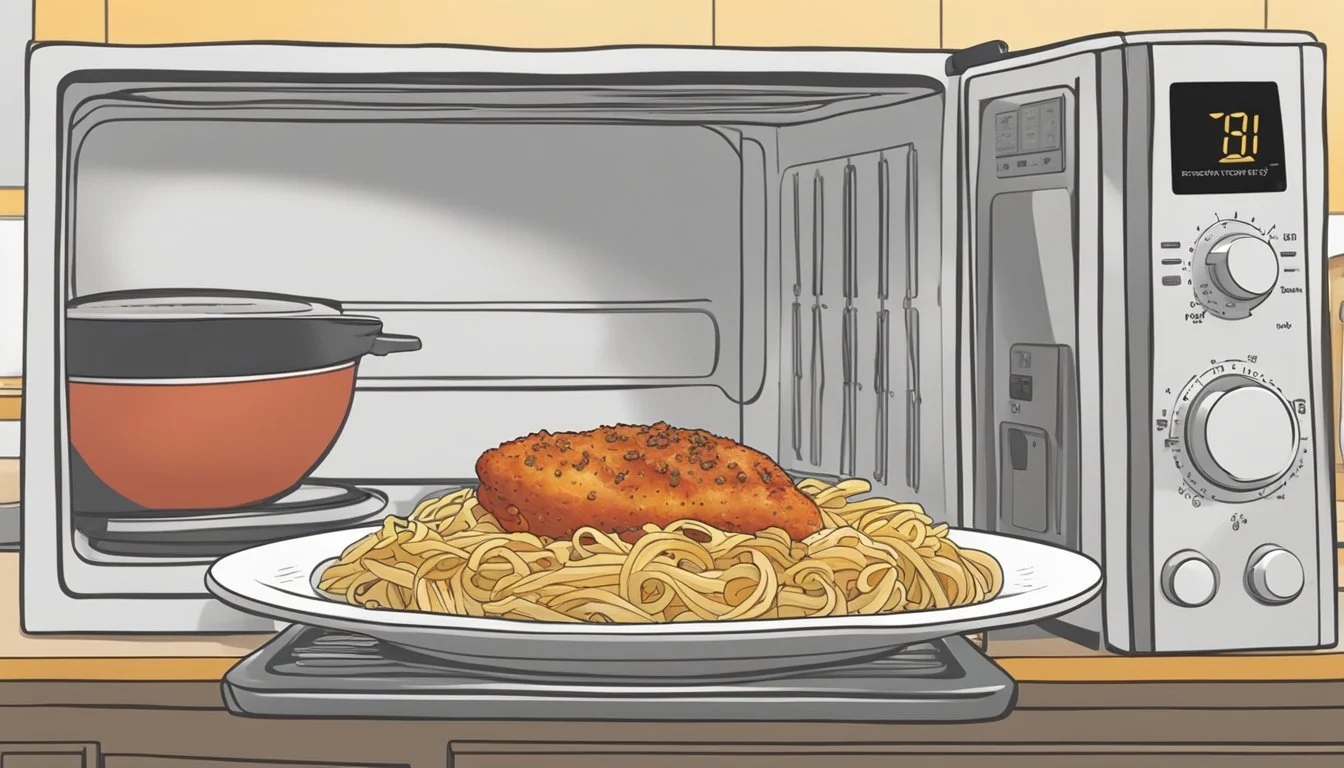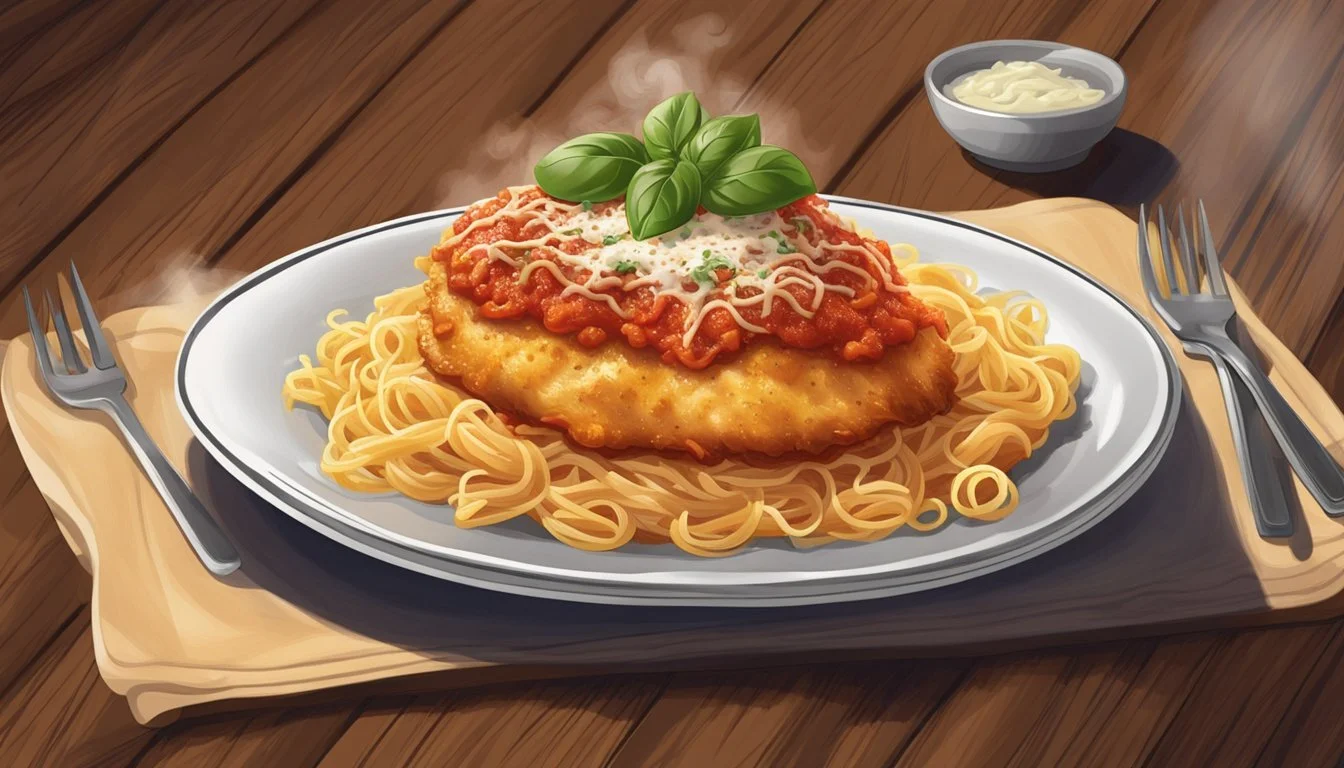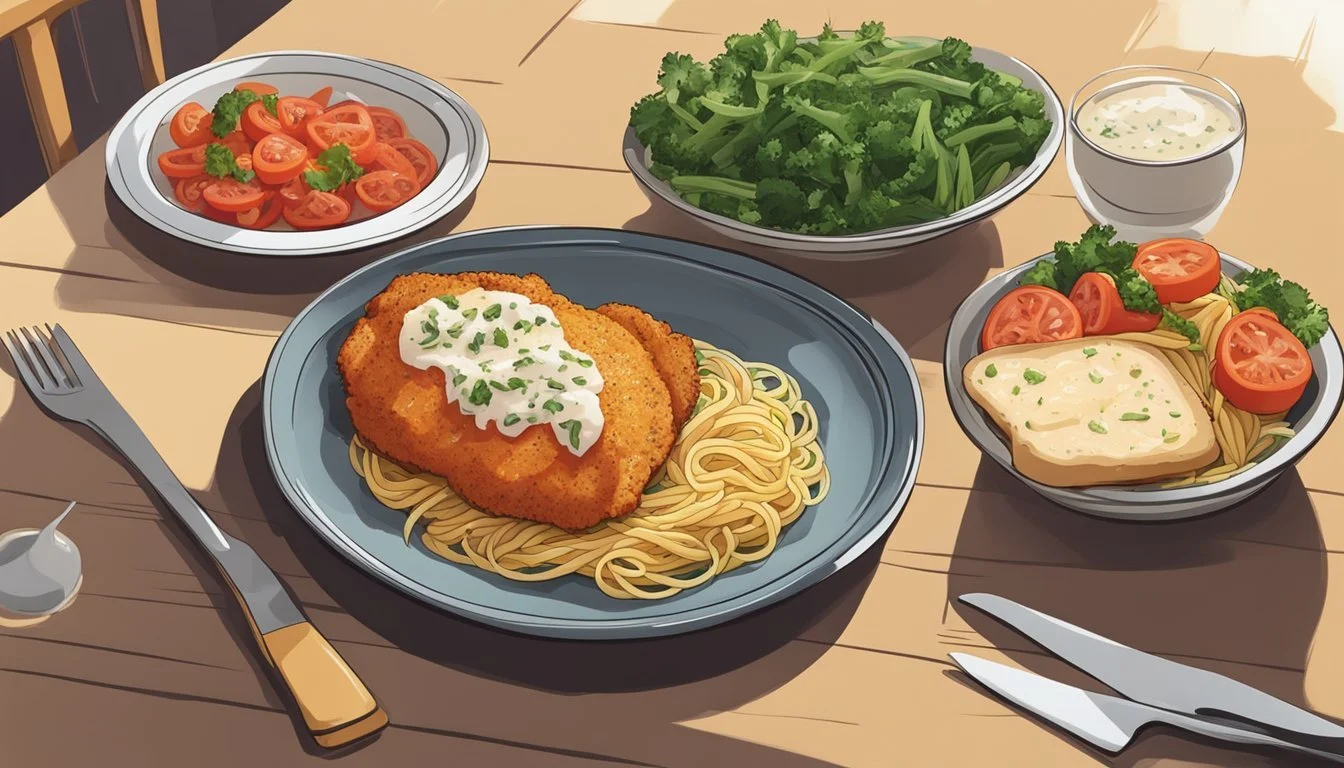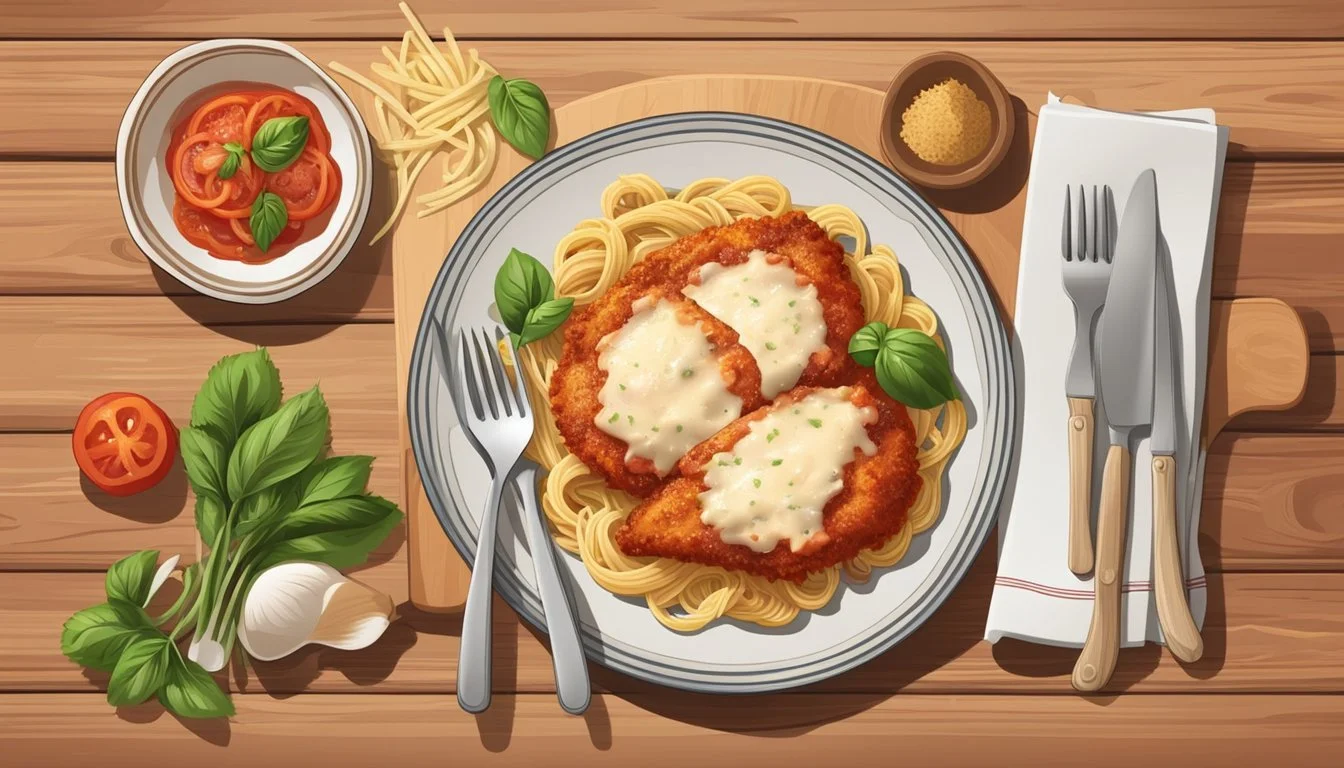How Long Does Chicken Parmesan with Pasta Last?
Storage Tips and Shelf Life
When it comes to enjoying a delicious chicken Parmesan with pasta, knowing how long it can last in the fridge is crucial for health and flavor. Proper storage and timely consumption ensure that you savor every bite without any risk. Cooked chicken Parmesan with pasta generally lasts up to 4 days in the refrigerator when stored in an airtight container.
To maintain the quality of this delightful dish, always store it in a well-sealed container and keep it at a consistent, cool temperature. Before indulging in leftovers, check for any signs of spoilage, such as an off-odor or visible mold.
Understanding these guidelines not only helps in preventing food waste but also ensures that each meal remains as tasty and safe as the first time it was served.
Understanding Chicken Parmesan
Chicken Parmesan is a beloved Italian-American dish featuring breaded chicken breasts topped with marinara sauce and melted cheese. It's a comforting and flavorful meal that combines textures and flavors seamlessly.
Key Ingredients
Chicken Breasts: Typically, boneless, skinless chicken breasts are used for this dish. They are tenderized to ensure even cooking and seasoned with Italian seasoning.
Breadcrumbs: These create a crispy outer layer. Panko breadcrumbs or Italian-seasoned breadcrumbs are popular choices.
Cheese: A mix of Parmesan and Mozzarella cheese is standard. Parmesan adds a nutty flavor while mozzarella provides gooey meltiness.
Garlic: Fresh garlic is often included in the breadcrumb mixture or tomato sauce for added flavor.
Parsley: Fresh parsley is used for garnish, adding a hint of freshness and color.
Chicken Parmesan Overview
Chicken Parmesan involves several steps. The chicken breasts are first pounded to an even thickness. They are then coated with a mixture of breadcrumbs, grated Parmesan, and Italian seasoning.
These breaded chicken pieces are pan-fried until golden brown. Following this, they are topped with marinara sauce and mozzarella and baked until the cheese is melted and bubbly.
The final dish is a harmonious blend of crispy chicken, savory sauce, and gooey cheese. It's often served with pasta, completing the classic comfort food combination.
Preparing Chicken Parmesan with Pasta
Preparing Chicken Parmesan with pasta can be a straightforward and rewarding task. The steps include gathering ingredients, following precise cooking techniques, and understanding the cook and prep times.
Step-by-Step Recipe
Begin by seasoning the chicken breasts with salt and pepper. Heat a large skillet over medium-high heat and add olive oil. Cook the chicken until browned on both sides, about 3-4 minutes per side. Set aside.
In the same skillet, add garlic and cook for about 1 minute until fragrant. Pour in marinara sauce and bring to a simmer. Add the chicken back to the skillet, ensuring it is well-coated with the sauce.
Cook pasta separately according to package instructions until it is al dente. Combine the cooked pasta with the chicken and sauce in the skillet. Sprinkle grated Parmesan cheese and fresh basil leaves over the top. Serve warm.
Cook Time and Prep Time
Total preparation and cook time involves approximately 20 minutes of prep time and 30 minutes of cooking time. The detailed breakdown includes:
Prep Time: Chopping vegetables, seasoning chicken, and boiling pasta takes around 20 minutes.
Cook Time: Browning chicken and simmering the sauce along with pasta takes about 30 minutes.
Ensuring the pasta is cooked al dente and the chicken is fully cooked is essential for optimal flavor.
Cooking Techniques
Effective cooking techniques include browning the chicken for flavor and using fresh ingredients like basil and Parmesan cheese.
When cooking pasta, use a large pot of salted water and taste regularly to ensure it is cooked al dente. Draining and setting aside a portion of pasta water can help achieve the desired sauce consistency.
Combining fresh garlic with marinara sauce and letting it simmer intensifies the flavors. Using a large skillet allows even cooking and mixing of the ingredients, enhancing the dish’s taste and texture.
Proper Storage for Leftovers
Proper storage is crucial to extending the shelf life of chicken parmesan with pasta. The key points covered include refrigeration techniques and methods for freezing to preserve quality and safety.
Refrigeration Techniques
Leftover chicken parmesan and pasta should be stored in airtight containers to prevent moisture and contaminants from entering. After cooking, allow the meal to cool to room temperature before refrigerating. Placing hot food directly in the fridge can increase the internal temperature and lead to bacterial growth.
Labeling the containers with dates is helpful for tracking the storage time. Chicken parmesan with pasta typically lasts up to 4 days in the fridge. Use a paper towel to absorb excess moisture in the container, which can help maintain texture.
Freezing Chicken Parmesan and Pasta
For longer storage, freezing is an excellent option. Store leftovers in airtight, freezer-safe containers or heavy-duty freezer bags. Individually wrap portions in plastic wrap and then place them in the containers to minimize freezer burn and improve thawing efficiency.
Before freezing, ensure the meal has cooled completely. Frozen chicken parmesan with pasta maintains quality for about 1 to 2 months. When ready to eat, thaw in the refrigerator overnight and reheat thoroughly in the oven or microwave.
Reheating Instructions
Reheating chicken parmesan with pasta can be done using different methods. Each method has its own advantages depending on the desired outcome and convenience.
Microwave Reheating
Microwave reheating is quick and ideal for single servings. To start, place the chicken parmesan and pasta on a microwave-safe plate. Cover it with a microwave-safe lid or damp paper towel to retain moisture.
Set the microwave to medium power (about 70%) to avoid overcooking. Heat for 2-3 minutes, then check if it's warm enough. If not, continue in 30-second intervals. Rest for 1 minute before serving.
Tip: Add a splash of water to the pasta to keep it from turning dry.
Stovetop Reheating
Stovetop reheating is an effective way to preserve the texture of both the chicken and pasta. In a large skillet, heat a small amount of olive oil over medium heat.
Place the chicken parmesan in the skillet and cover it with a lid. Heat for about 5-7 minutes on each side, ensuring even warming. For the pasta, place it in the same skillet after the chicken is warmed. Add a splash of water or broth.
Stir the pasta occasionally to prevent sticking. Warm until both the chicken and pasta reach the desired temperature.
Shelf Life Considerations
Chicken Parmesan with pasta can be a delicious meal, but its shelf life and safety depend on proper storage and awareness of spoilage signs. Understanding how to store it correctly will help maintain its quality and extend its usability.
Signs of Spoilage
It's crucial to identify signs of spoilage to avoid consuming unsafe food. Chicken Parmesan should be checked for an off-odor, which may signal bacterial growth or spoilage. Visible mold on either the chicken or the pasta is another clear sign that the food should not be consumed. In addition, a slimy texture on the chicken or pasta indicates spoilage. The color of the chicken and sauce should also be examined; discoloration could mean it is no longer safe to eat.
Maximizing Freshness
To maximize the freshness of Chicken Parmesan with pasta, proper storage is essential. Refrigerate leftovers within two hours of cooking in an airtight container. This not only helps maintain flavor but also prevents bacterial growth. Chicken Parmesan can last in the refrigerator for up to four days if stored properly.
For longer storage, freezing is an option. Chicken Parmesan with pasta can be frozen for up to three months. When freezing, using a vacuum-sealed bag or an airtight container will help prevent freezer burn and maintain quality. Reheating should be done thoroughly to an internal temperature of 165°F (74°C) to ensure safety.
By following these guidelines, the shelf life and freshness of Chicken Parmesan with pasta can be maintained effectively. Proper storage and vigilance for signs of spoilage are key to enjoying this dish safely and deliciously.
Nutritional Profile
Chicken Parmesan with pasta offers a varied nutritional profile, including key macronutrients: protein, carbohydrates, and fats. Serving sizes can differ significantly, impacting the nutritional values consumed.
Macronutrient Breakdown
Chicken Parmesan with pasta provides a robust mix of macronutrients. A typical serving includes protein, vital for muscle repair and growth. This dish often contains roughly 40 grams of protein per serving, depending on the recipe and portion size.
Carbohydrates from the pasta offer a primary energy source. A serving can range from 50 to 80 grams of carbs, influenced by the type and quantity of pasta used. These carbs include fiber, which aids digestion; an average serving contains about 3 to 5 grams of fiber.
Fats are also present, with some coming from the cheese and cooking oils. The fat content can vary, but a typical serving could include approximately 20 to 30 grams of fat. This dish may have around 10 grams of saturated fat, impacting heart health.
Understanding Serving Sizes
Serving sizes for Chicken Parmesan with pasta can significantly alter the nutritional intake. Restaurants and homemade recipes may vary, typically offering portions between 100 grams to over 300 grams per serving.
Calories differ accordingly, with smaller servings containing around 300 to 500 calories, while larger servings could exceed 1000 calories. An average 159-gram serving might offer roughly 324 calories, while a 340.2-gram portion could have up to around 538 calories from pasta.
Properly understanding serving sizes helps manage intake. For instance, controlling portion size ensures balanced consumption of nutrients like protein, carbs, and fats. Labels and nutritional information typically detail the macro distribution, aiding in meal planning and dietary adherence.
This knowledge is invaluable for maintaining a balanced diet and making informed food choices.
Customization and Substitutions
Chicken Parmesan with pasta offers various ways to tailor the recipe to individual preferences, accommodating dietary needs and ingredient availability. Considering the diversity of diets and options can make this dish more inclusive and adaptable.
Diet-Friendly Variations
Creating a gluten-free version is straightforward. Use gluten-free pasta and ensure the breadcrumbs for the chicken are also gluten-free. Almond flour can be an excellent substitute, adding a nutty taste.
For a vegetarian alternative, replace the chicken with hearty veggies. Options like mushrooms, broccoli, or baby spinach work well. Bake or saute these vegetables to maintain texture and flavor.
Low-carb enthusiasts can opt for spiralized veggies like zucchini noodles instead of traditional pasta. This change reduces carbs while keeping the dish fulfilling and tasty.
Ingredient Swaps
Ingredient flexibility allows for creative spins. Swap regular pasta with whole wheat or chickpea pasta to boost fiber and protein content. For those avoiding dairy, nut-based cheeses or vegan cheese can be useful alternatives.
Incorporate more veggies to enhance nutrition and vary the flavors. Adding spinach or broccoli can introduce extra vitamins and minerals, making the meal more wholesome.
For a richer taste, use marinara sauce mixed with a bit of heavy cream or coconut milk. This creates a creamy texture without relying on traditional Alfredo sauce. Implementing these substitutions can refresh and redefine classic Chicken Parmesan with pasta.
Complementary Side Dishes
Choosing the right side dishes for chicken parmesan with pasta enhances the meal, balancing the flavors and textures. A harmonious selection of sides adds variety and elevates the dish into a complete and satisfying dining experience.
Best Pairings
Caesar Salad: A classic caesar salad provides a crisp and tangy contrast to the rich and savory flavors of chicken parmesan. The combination of crunchy romaine lettuce, grated parmesan cheese, and creamy caesar dressing complements the meal without overwhelming it.
Garlic Bread: Garlic bread offers a warm, buttery, and slightly crispy element to pair with the main dish. Infused with garlic and herbs, it is perfect for soaking up extra pasta sauce.
Ingredients: French bread, butter, garlic, parsley
Preparation: Spread the garlic butter mixture on bread slices and bake until golden.
Asparagus: Grilled or roasted asparagus brings a fresh and slightly earthy flavor to the table. This green vegetable pairs well with the hearty chicken parmesan, providing a lighter, healthier side option.
Coleslaw: A tangy and crunchy coleslaw can add a refreshing break from the richness of the main dish. Ingredients such as shredded cabbage, carrots, and a vinegar-based dressing create a balanced side that is quick and easy to prepare.
Brown Rice: For a heartier side, brown rice offers a nutty and chewy texture. It's versatile and can absorb some of the delicious pasta sauce from the chicken parmesan, making each bite even more flavorful.
Additional Tips and Tricks
To elevate your Chicken Parmesan with Pasta, consider incorporating these strategies for enhancing flavor and utilizing efficient cooking methods without compromising quality.
Enhancing Flavor
Use Fresh Ingredients
Prioritize fresh ingredients like parsley and garlic. Fresh parsley adds a lively color and aromatic quality to the dish.
Seasoning
Proper seasoning is crucial. Ensure to use both salt and pepper generously while cooking, adjusting to taste.
Cheese Selection
Opt for high-quality cheeses. Parmesan cheese provides a sharp, nutty flavor, while fresh mozzarella melts beautifully, offering a gooey texture.
Olive Oil
Use extra-virgin olive oil for sautéing. It enhances the richness and adds a subtle, fruity undertone.
Garnish
Finish the dish with a sprinkle of freshly chopped parsley and a drizzle of olive oil for extra flair and flavor.
Efficient Cooking Methods
Simmering Sauce
Allow the tomato sauce to simmer gently. This method deepens the flavors, letting the seasonings blend well. Include chicken broth in the sauce to enrich its taste and texture.
One-Pot Cooking
Consider a one-pot method to reduce cleanup time. Cook pasta directly in the sauce by adding water or broth, which not only saves time but also marries the flavors better.
Prepping Ingredients
Prepare all ingredients before starting. Have chicken, garlic, cheeses, and seasonings ready to streamline the cooking process.
Cook Chicken Evenly
Ensure to cook chicken pieces evenly by flipping them at regular intervals and maintaining a consistent heat – typically medium – to avoid burning and fully cook through.
Taking these approaches will help you create an exceptional Chicken Parmesan with Pasta, making the cooking process smoother and enhancing the dish’s overall taste.

